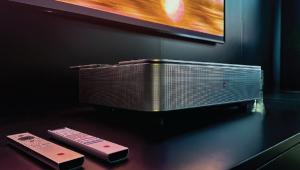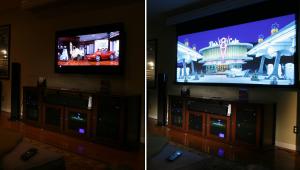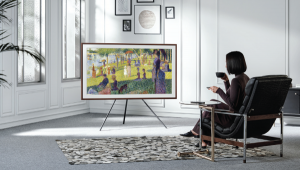5 Ways to Get Decorator-Friendly Bass

Of course, with styling that’s rarely beyond the adjectives of “big, black cube,” the sub is usually public enemy number one when it comes to aesthetics. And when people see the size of a serious subwoofer, their first reaction is often a kind of stunned, “Umm, where do you expect me to put that thing? And do we have to have it?”
I experienced a similar sub-size gut check recently when I decided to add a second sub to my own system and just couldn’t find a location that would accommodate the massive 21.7 x 25 x 30.9-inch (WxHxD), 175-pound SVS PB16-Ultra I really wanted. (I ultimately scaled back to the slightly more demure SB16-Ultra.) So what can be done if you want to enjoy awesome bass but don’t have the design flexibility to go with a large sub? Glad you asked! Here are five options to consider.
1. Change the Location
While sub placement can be a bit tricky to begin with, if you think your only placement option is the front of the room next to your electronics, you might be limiting your design choices. And perhaps your, um, decorator would be more amenable to a larger subwoofer if it weren’t so prominently placed. With a wireless subwoofer kit, you can transmit the sub’s signal from your receiver to virtually anywhere in the room, allowing you to relocate your subwoofer anywhere you have a power outlet without having any new wiring.
2. Ditch the Black
Where a black cube sitting on the floor might stick out like a sore thumb, a white model may well blend
in. Sub manufacturers have started embracing this alternative, and sleek, glossy white models are available in several performance levels from Monitor Audio, REL, SVS, KEF, Bowers & Wilkins, and others.
3. Go Slim
Just because the majority of subs look like they’ve been fabricated by the Borg doesn’t mean other designs don’t exist. One perfect example of a thoughtful design alternative is the new Bluesound Pulse Subwoofer. The Pulse features a very shallow, sub-5-inch depth so it can slide under a couch or sit behind a piece of furniture where it will be totally out of sight. Imagine your guests’ surprise when massive bass erupts from seemingly nowhere! And don’t let its shallow depth fool you; the Pulse Sub still manages to put out an impressive amount of deep bass down to 26 hertz!
4. Put It In the Wall
Getting deep bass is possible without using even 1 inch of your floor’s real estate with an in-wall subwoofer. These are available from many top manufacturers such as Polk, Paradigm, Leon, Klipsch,
Definitive Technology, and JL Audio (check out our review of JL’s Fathom ). For maximum performance, many in-wall subs require using a back box enclosure to create the necessary acoustic space for the sub and reduce wall vibrations. And because these subs need to fit in a standard 2x4 with an internal depth of 3⅜ inches, some in-wall subs can be used outside of a wall and could slide under a couch or behind a piece of furniture.
5. Hide It Away
If your AV gear is housed in cabinetry, an open space in the cabinet offers another spot to conceal a sub. For bass to flow into the room, make sure the doors aren’t solid but rather covered with a material like speaker grille cloth, perforated metal, or louvers. It’s important to decouple the sub from the cabinet as much as possible, so either cut out the bottom of the cabinet so the sub sits directly on the floor or use something like the SVS Soundpath Subwoofer Isolation System to help reduce vibration transmission. It’s best to keep the open space around the sub to a minimum to reduce unwanted boominess from this secondary enclosure, so select a sub with the tightest fit inside your cabinet and look for a sealed or front-ported design.
Another great option for stealthy bass is the PowerPipe subwoofer from James Loudspeaker. This ingenious design fires bass through a flexible tube that blasts into the room through several port options that can be configured in a variety of shapes, sizes, and colors to mount into a cabinet’s toe kick or through a floor or ceiling vent.





























































